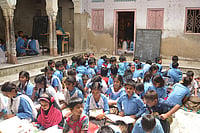
But the real story lies in how KVIC managed to pull off such a commendable feat. Through its network of 2.72 lakh villages and 7,000 outlets spread over the country, KVIC has engineered a quiet revolution in the countryside, promoting the manufacture of eco-friendly products, handcrafted in a rural setting. It has also invested Rs 5,000 crore over the past five years in new products. It has also upgraded its R&D facilities and developed a range of upmarket products for local consumption as well as for the export market. When khadi products finally caught urban fancy, rural India was ready. In the past fiscal year alone, KVIC posted a growth rate of 14.3 per cent, much to the swadeshi lobby’s delight. These staggering figures are undoubtedly invaluable as evidence of the growth potential of India’s rural and cottage industries.
What’s more, KVIC claims to have provided employment to 18 lakh people during the Ninth Plan period and hopes to create another 25 lakh jobs in the next few years. Schemes such as group insurance for spinners of khadi and skilled artisans, investment in R&D, an up-and-running sales network and a successful rural employment-generation scheme have opened up a plethora of possibilities for rural India. Roll over ramp hogs, desi seems to be the way to go.






















